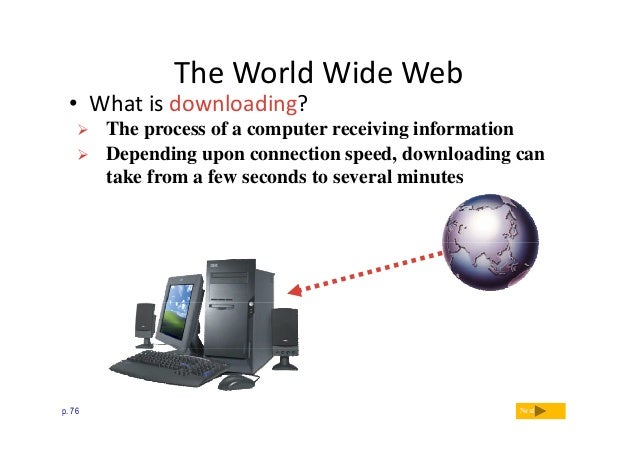INTRODUCTION TO MICROPROCESSOR AND MICROCOMPUTER ARCHITECTURE:
- About Press Copyright Contact us Creators Advertise Developers Terms Privacy Policy & Safety How YouTube works Test new features Press Copyright Contact us Creators.
- Aug 21, 2019 The 8085 microprocessor is an example of Microcomputer System. A microprocessor system contains: two types of memory that are EPROM and R/WM, Input and Output devices and the buses that are used to link all the peripherals (memory and I/Os) to the MPU.
Microcomputer, an electronic device with a microprocessor as its central processing unit (CPU). Microcomputer was formerly a commonly used term for personal computers, particularly any of a class of small digital computers whose CPU is contained on a single integrated semiconductor chip. Much of the remaining circuitry of a complete microcomputer system in a single chip. Microcontroller includes RAM, ROM, serial and parallel interface, timer, interrupt schedule circuitry (in addition to CPU) in a single chip. Interrupt system is an important feature, as microcontrollers have to.
A microprocessor is a programmable electronics chip that has computing and decision making capabilities similar to central processing unit of a computer. Any microprocessor-based systems having limited number of resources are called microcomputers. Nowadays, microprocessor can be seen in almost all types of electronics devices like mobile phones, printers, washing machines etc. Microprocessors are also used in advanced applications like radars, satellites and flights. Due to the rapid advancements in electronic industry and large scale integration of devices results in a significant cost reduction and increase application of microprocessors and their derivatives.
·Bit: A bit is a single binary digit.
·Word: A word refers to the basic data size or bit size that can be processed by thearithmetic and logic unit of the processor. A 16-bit binary number is called a word in a 16-bit processor.
·Bus: A bus is a group of wires/lines that carry similar information.
·System Bus: The system bus is a group of wires/lines used for communicationbetween the microprocessor and peripherals.
·Memory Word: The number of bits that can be stored in a register or memoryelement is called a memory word.
·Address Bus: It carries the address, which is a unique binary pattern used to identify

a memory location or an I/O port. For example, an eight bit address bus has eight lines and thus it can address 28 = 256 different locations. The locations in hexadecimal format can be written as 00H – FFH.
·Data Bus: The data bus is used to transfer data between memory and processor orbetween I/O device and processor. For example, an 8-bit processor will generally have an 8-bit data bus and a 16-bit processor will have 16-bit data bus.
·Control Bus: The control bus carry control signals, which consists of signals forselection of memory or I/O device from the given address, direction of data transfer and synchronization of data transfer in case of slow devices.
A typical microprocessor consists of arithmetic and logic unit (ALU) in association with control unit to process the instruction execution. Almost all the microprocessors are based on the principle of store-program concept. In store-program concept, programs or instructions are sequentially stored in the memory locations that are to be executed. To do any task using a microprocessor, it is to be programmed by the user. So the programmer must have idea about its internal resources, features and supported instructions. Each microprocessor has a set of instructions, a list which is provided by the microprocessor manufacturer. The instruction set of a microprocessor is provided in two forms: binarymachine code and mnemonics.
Microprocessor communicates and operates in binary numbers 0 and 1. The set of instructions in the form of binary patterns is called a machine language and it is difficult for us to understand. Therefore, the binary patterns are given abbreviated names, called mnemonics, which forms the assembly language. The conversion of assembly-level language into binary machine-level language is done by using an application called assembler.
Technology Used:
The semiconductor manufacturing technologies used for chips are:
·Transistor-Transistor Logic (TTL)
·Emitter Coupled Logic (ECL)
·Complementary Metal-Oxide Semiconductor (CMOS)
Classification of Microprocessors:
Based on their specification, application and architecture microprocessors are classified.
Based on size of data bus:
·4-bit microprocessor
·8-bit microprocessor
·16-bit microprocessor
·32-bit microprocessor
Based on application:
·General-purpose microprocessor- used in general computer system and can be used by programmer for any application. Examples, 8085 to Intel Pentium.
·Microcontroller- microprocessor with built-in memory and ports and can be programmed for any generic control application. Example, 8051.
·Special-purpose processors- designed to handle special functions required for an application. Examples, digital signal processors and application-specific integrated circuit (ASIC) chips.
·Reduced Instruction Set Computer (RISC) processors
·Complex Instruction Set Computer (CISC) processors
CONCEPTS AND DEFINITIONS
A microcomputer is a small digital computer that can take several different forms. It can be a single integrated circuit, or it can be a module made up of several integrated circuits on a printed-circuit board.
The two most common types of microcomputers are the embedded micro- controller and the personal computer. One special type of microcomputer is the programmable logic controller (PLC) used for industrial control (Chapter 12).

The larger microcomputers, such as personal computers, are made with a microprocessor. A microprocessor is a large-scale integrated circuit that con- tains most of the digital logic circuitry usually associated with a digital com- puter. This logic circuitry is referred to as the central processing unit (CPU). A microprocessor is a single-chip CPU.
Another common micro is called a core. A core is a microprocessor or microcomputer integrated with some other circuits. The core is made on the same silicon chip as a cell phone or a security device. Today multicore micros are common. Two or more cores are used to get more processing power.
Embedded microcontrollers are complete micros on a single chip, including the CPU, memory, and input/output circuits. But in all cases, a microcomputer is an assembly of digital logic circuits, such as gates and flip-flops, that is used to process data. It is sometimes referred to as a data processor, or simply processor.
Data, of course, refers to the binary numbers and words the processor works with. Processing refers to the way the data is manipulated or handled. Types of processing include arithmetic, logic, sorting, translating, editing, counting, and searching. Any action taken on the data is called processing. Processing normally implies that the data is changed in some way or is used to create new data. Data that is not processed as suggested above is dealt with in other ways. Four common ways are storing, retrieving, input, or output. The data is not changed by any of these techniques.
Storing data means putting it in a safe place, like a semiconductor memory or disk drive, where it can be accessed later. Retrieving, of course, is the opposite of storing, or going to get the data for reuse.
Input means taking data into the computer to be stored or processed. Output means sending the data from the computer to some external device. Input and output (I/O) are ways to transmit data from one place to another.
Another feature of a microcomputer is its decision-making capability. During processing, the computer can make decisions and alter its sequence of operation. In other words, the computer can “make up its mind” based on the state of the data or outside conditions.
For example, the computer can tell if a number is less than, greater than, or equal to another. It can choose among alternative courses of actions or say yes or no, true or false, if given enough input facts.
Another major application of computers is control. Computers can be used to actuate relays and solenoids or turn lights and motors off and on (see Figure 6.1). In control applications, the computer actually determines when external devices are turned on or off. The computer serves as an electronic clock to time various operations. One example is the embedded single-chip microcontroller inside a microwave oven or a washing machine. Another example is a programmable logic controller (PLC), a special type of microcomputer used
in industrial applications, that is commonly used to sense, sequence, and time operations in a factory.
Microcomputer Applications Meaning
The most important thing to remember is that the control is automatic. The micro knows when to perform the various operations that it has been assigned because it has been programmed to do so.
In order to implement certain control applications, the micro must also per- form a monitoring function. The micro “looks at” the process or devices being controlled to see what is happening. For example, the computer can monitor switch closures to determine physical state or position, pressure, and many other parameters. Transducers (sensors) convert the monitored physical characteristics, such as temperature or light level, into electrical signals that the computer can understand and respond to (see Figure 6.2 ). In most microcontrollers or PLCs, the controlled output change takes place only if a specific
input condition is sensed or not sensed. For example, if a temperature sensor indicates that the temperature has risen to a specific level, the computer will turn on a cooling fan.
Micros sometimes change the control function in response to one or more of the inputs they are monitoring. For example, if the micro senses that the liquid in a tank exceeds a given level, it can automatically turn off the pump that is filling the tank. If the liquid level goes below a predetermined level, the micro detects this and automatically starts the pump (see Figure 6.3). The key point here is that the computer makes its own decisions based on the input data that it receives. The result is full automation of some process or device.
The micro’s ability to monitor and control operation may be used to auto- mate simple processes in a toy or to operate entire factories.


Incoming search terms:
Microcomputer Features
Related posts:
